Call for Zone 8 Rules Change Proposals for 2016
40 posts
• Page 1 of 3 • 1, 2, 3
Call for Zone 8 Rules Change Proposals for 2016
Now that we've got 5 months of 2015 club activities under our belt, it is Rules Month in Zone 8. If you have been participating in a Zone 8 Autocross, Time Trial, Concours, or Rally, now's your chance to submit rules change proposals for 2016.
The current Zone 8 Rules can be found here:
http://www.zone8.org/events/rules/current.php
The Zone 8 Rules Proposal process can be found here:
http://www.zone8.org/events/rules/proposed.php
It is important to include the following in your proposal:
1) A brief summary of the change you are proposing.
2) A brief excerpt of the existing Zone 8 rule that you are proposing to change.
3) A marked up version of the above excerpt with the new rules language you are proposing.
4) Rationale/supporting data for your proposed change.
Please send your submission to Rules@Zone8.org. The deadline for submitting proposals is June 30, 2015.
The current Zone 8 Rules can be found here:
http://www.zone8.org/events/rules/current.php
The Zone 8 Rules Proposal process can be found here:
http://www.zone8.org/events/rules/proposed.php
It is important to include the following in your proposal:
1) A brief summary of the change you are proposing.
2) A brief excerpt of the existing Zone 8 rule that you are proposing to change.
3) A marked up version of the above excerpt with the new rules language you are proposing.
4) Rationale/supporting data for your proposed change.
Please send your submission to Rules@Zone8.org. The deadline for submitting proposals is June 30, 2015.
Russell
PCA Zone 8 Rules Tech Advisor
Z8 TT/DE Chair ('20-'22)
Z8 Rules Chair ('12-'18)
Porsche Boxster S
Lotus Exige S
Toyota 4Runner TRD Off Road
PCA Zone 8 Rules Tech Advisor
Z8 TT/DE Chair ('20-'22)
Z8 Rules Chair ('12-'18)
Porsche Boxster S
Lotus Exige S
Toyota 4Runner TRD Off Road
-
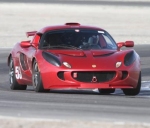
rshon - Time Trialer
- Posts: 357
- Joined: Tue Feb 14, 2006 8:07 pm
- Location: Tace et Fruor Equito
Re: Call for Zone 8 Rules Change Proposals for 2016
Nine days left to get your proposals in...
I read over the rules (again) preparing for the tech inspection school and I know I have a batch of proposals that are getting some polish with some help from my friends...
Be sure to get yours in! No whining about the rules next year if you don't participate in the process this year.
Go read the rules, you will be surprised what you will find.
The current Zone 8 Rules can be found here:
http://www.zone8.org/events/rules/current.php
Timeline for 2016
Proposal & Comment Period: February 1 to June 30, 2015
Comment Only Period: July 1 to August 31, 2015
Rules Committee Meets: September 12, 2015
Second Comment Period: September 21 to October 31, 2015
Final Proposal to Presidents: November 7, 2014
Presidents Approve: November 22, 2015
I read over the rules (again) preparing for the tech inspection school and I know I have a batch of proposals that are getting some polish with some help from my friends...
Be sure to get yours in! No whining about the rules next year if you don't participate in the process this year.
Go read the rules, you will be surprised what you will find.
The current Zone 8 Rules can be found here:
http://www.zone8.org/events/rules/current.php
Timeline for 2016
Proposal & Comment Period: February 1 to June 30, 2015
Comment Only Period: July 1 to August 31, 2015
Rules Committee Meets: September 12, 2015
Second Comment Period: September 21 to October 31, 2015
Final Proposal to Presidents: November 7, 2014
Presidents Approve: November 22, 2015
Steve Grosekemper #97
http://www.911SG.com
https://www.facebook.com/911steveg/
https://www.instagram.com/steve911sg/
PCA-SDR Tech Advisor/Scrutineer/Forum-Admin
1997 993S & 986S street cars & 911SC track car.
http://www.911SG.com
https://www.facebook.com/911steveg/
https://www.instagram.com/steve911sg/
PCA-SDR Tech Advisor/Scrutineer/Forum-Admin
1997 993S & 986S street cars & 911SC track car.
-

Steve Grosekemper - Admin
- Posts: 1381
- Joined: Thu Jul 01, 2004 6:15 pm
- Location: San Diego
Re: Call for Zone 8 Rules Change Proposals for 2016
10 hours to go to get your rules proposals in!
If you don't participate you don't get to complain!
If you don't participate you don't get to complain!
Steve Grosekemper #97
http://www.911SG.com
https://www.facebook.com/911steveg/
https://www.instagram.com/steve911sg/
PCA-SDR Tech Advisor/Scrutineer/Forum-Admin
1997 993S & 986S street cars & 911SC track car.
http://www.911SG.com
https://www.facebook.com/911steveg/
https://www.instagram.com/steve911sg/
PCA-SDR Tech Advisor/Scrutineer/Forum-Admin
1997 993S & 986S street cars & 911SC track car.
-

Steve Grosekemper - Admin
- Posts: 1381
- Joined: Thu Jul 01, 2004 6:15 pm
- Location: San Diego
Re: Call for Zone 8 Rules Change Proposals for 2016
The Zone 8 Rules Change proposals for 2016 have been collected and can be reviewed here:
http://www.zone8.org/assets/docs/2015/Rules/RuleProposals2015.pdf
Members have until August 28 to make comments on these proposals, at which time the Zone 8 Rules committee will convene to review the proposals and their respective membership input.
Please send all comments to Rules@Zone8.org.
http://www.zone8.org/assets/docs/2015/Rules/RuleProposals2015.pdf
Members have until August 28 to make comments on these proposals, at which time the Zone 8 Rules committee will convene to review the proposals and their respective membership input.
Please send all comments to Rules@Zone8.org.
Russell
PCA Zone 8 Rules Tech Advisor
Z8 TT/DE Chair ('20-'22)
Z8 Rules Chair ('12-'18)
Porsche Boxster S
Lotus Exige S
Toyota 4Runner TRD Off Road
PCA Zone 8 Rules Tech Advisor
Z8 TT/DE Chair ('20-'22)
Z8 Rules Chair ('12-'18)
Porsche Boxster S
Lotus Exige S
Toyota 4Runner TRD Off Road
-

rshon - Time Trialer
- Posts: 357
- Joined: Tue Feb 14, 2006 8:07 pm
- Location: Tace et Fruor Equito
Re: Call for Zone 8 Rules Change Proposals for 2016
Who comes up with this stuff? Please let me know the racing header manufacturer that will increase hp by 40+ .
The most hp increase I have seen with headers was on my 964 with an extremely restricted stock headers/exhaust system. It produced approx. an additional 20 hp. From my experience, any other car with racing headers added about 3-6 hp without re-mapping the chip. 50 points is excessive, maybe it's worth about 5 points. (Yes, I emailed this to the rules chair)
Martin Reinhardt
The most hp increase I have seen with headers was on my 964 with an extremely restricted stock headers/exhaust system. It produced approx. an additional 20 hp. From my experience, any other car with racing headers added about 3-6 hp without re-mapping the chip. 50 points is excessive, maybe it's worth about 5 points. (Yes, I emailed this to the rules chair)
Martin Reinhardt
FF.
Non-stock muffler or muffler removed 5
Catalytic Converter removed
5
. . .
Non-stock exhaust manifold (installed after cylinder head) /Headers 50
Rationale:
People are installing racing headers on cars to gain upwards of 40+ horsepower for no increase in PE points.
Cars are given performance equipment points for non-stock muffler and removed muffler or catalytic converter which equates to only a few horsepower; usually less than 10. But there is no points penalty for replacement of exhaust system with headers.
10Because of this rule loophole people are running cars with 100% stock engines with headers and open exhaust with no points being taken. (Other than the 10 for missing cat/muffler)
Martin Reinhardt
http://www.youtube.com/flatsixracer
Past - Timing, Registration, Webmaster, Certified Instructor
'07 Cayman S
'07 Formula Renault 2.0
'16 Cayenne
http://www.youtube.com/flatsixracer
Past - Timing, Registration, Webmaster, Certified Instructor
'07 Cayman S
'07 Formula Renault 2.0
'16 Cayenne
-
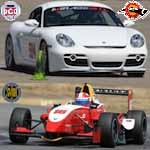
martinreinhardt - Pro Racer
- Posts: 1039
- Joined: Wed Jun 30, 2004 7:32 pm
- Location: Zone 8
Re: Call for Zone 8 Rules Change Proposals for 2016
I already sent a response arguing against the Street Stock proposal to limit tire width to the largest width available from the factory when new.
There should be at least some small allowance (I proposed +20mm) to allow a decent chance to be able to get the tire model that you want. In particular, my car came with 265 rear width tires. Both 255 and 275 are much more popular widths than 265 with much wider availability.
There should be at least some small allowance (I proposed +20mm) to allow a decent chance to be able to get the tire model that you want. In particular, my car came with 265 rear width tires. Both 255 and 275 are much more popular widths than 265 with much wider availability.
-

jbrennen - Autocrosser
- Posts: 118
- Joined: Sun Apr 26, 2015 7:45 am
Re: Call for Zone 8 Rules Change Proposals for 2016
I agree with Jack. At least a 20mm deviation should be allowed. With this rule you are condemning some cars in a class to an inferior tire choice simply because they are not manufactured in an OEM size, while some competitors in the same class with a different model car will be able to run the "street tire de jour" for the season. Especially with the modern cars that have terrible understeer from the factory, a wider front tire is almost essential to make them handle well. Also, with the PSM system, diameters front and rear must be matched within a few % in order to keep the computers from freaking out, which further limits choices in sizing. Some people have made large investments in custom wheel and tire choices to optimize their cars that will be rendered obsolete with this rule change. I would rather see rules remain stable in this area, instead of neutering competition in the SS classes for the sake of the newbie who wants to drive off the showroom floor and be competitive. That isn't going to happen for other reasons, so why slow down the people who are trying to go faster in their stock cars?
"If it fits, you must acquit!"
TT
"If it fits, you must acquit!"
TT
Tom Tweed -- #908
SDR Tech Inspection Chair 2005-06
SDR Forum Admin 2010-present
Windblown Witness Assistant Editor 2012-present
Driving Porsches since 1964
SDR Tech Inspection Chair 2005-06
SDR Forum Admin 2010-present
Windblown Witness Assistant Editor 2012-present
Driving Porsches since 1964
-

ttweed - Admin
- Posts: 1851
- Joined: Fri Jul 02, 2004 7:13 am
- Location: La Jolla, CA
Re: Call for Zone 8 Rules Change Proposals for 2016
but here is the other side of that. The SS classes are supposed to be all about unmodified cars from the factory floor. If you can change tires up to the maximum width of the widest tire provided by Porsche for that model, that seems reasonable to me. I tend to think allowing wider tire widths in the name of a larger choice of available tires is contrary to the idea of the SS classes, as is trying to get "better" tires for autox than what is stock.
If you want to change out your tires and wheels to something better, run in the CC classes. CC classes are intended for people who want to mod their cars, and you are not restricted to any tire or wheel.
I do not see this as a "lets help the newbies" idea. They are not winning anyway as noted. I see it as a way to mod your SS car for autoX for an advantage over people who stay totally stock. I feel SS should be very close to showroom stock.
And Jack. You are winning regardless of tire. Just saying.
My 2 cents.
If you want to change out your tires and wheels to something better, run in the CC classes. CC classes are intended for people who want to mod their cars, and you are not restricted to any tire or wheel.
I do not see this as a "lets help the newbies" idea. They are not winning anyway as noted. I see it as a way to mod your SS car for autoX for an advantage over people who stay totally stock. I feel SS should be very close to showroom stock.
And Jack. You are winning regardless of tire. Just saying.
My 2 cents.
Monte Griffiths - #779
2010 Cayman
2010 Cayman
-
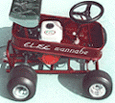
pecivil - Time Trialer
- Posts: 192
- Joined: Sat Dec 16, 2006 10:15 pm
- Location: Poway
Re: Call for Zone 8 Rules Change Proposals for 2016
Counterpoint... Here's what my stock factory tire looked like after 4 autocrosses and about 5,000 street miles.
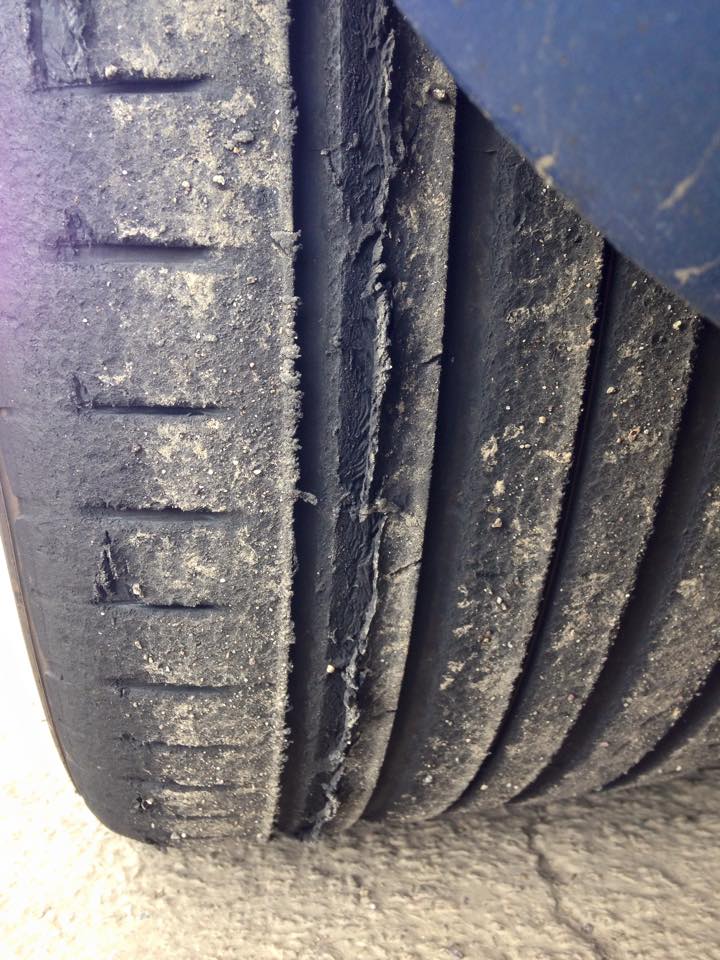
That tire is *done* for competition purposes. (At least I'm done with it.)
If you make people compete on "unmodified [tires] from the factory floor" that's what you can get.
I'd also note that picture was taken after the May 17 event, where I got whooped pretty handily in class. Could I conceivably run the stock Goodyears and be competitive? Maybe, but if that means buying new rubber every 3 events, count me out...

That tire is *done* for competition purposes. (At least I'm done with it.)
If you make people compete on "unmodified [tires] from the factory floor" that's what you can get.
I'd also note that picture was taken after the May 17 event, where I got whooped pretty handily in class. Could I conceivably run the stock Goodyears and be competitive? Maybe, but if that means buying new rubber every 3 events, count me out...
-

jbrennen - Autocrosser
- Posts: 118
- Joined: Sun Apr 26, 2015 7:45 am
Re: Call for Zone 8 Rules Change Proposals for 2016
The proposed rule is still more lenient than PCA National rules. Showroom stock is supposed to be just that. This is just a loophole that certain drivers have gotten used to exploiting. CC classes are available for anyone who would like to mod their cars which includes changing tire sizes and compounds.
A-2.5.4. Showroom Stock Modifications. Unless otherwise
specified in these rules, no alterations or modifications
are allowed to these automobiles.
Only original equipment manufacturer (OEM) wheels
as originally specified and OEM tire sizes as originally
specified for each specific model year are permitted.
All Showroom Stock class tires must have a tread wear
rating of 140 or greater. Wear and tear items, excluding
tires, must be comparable in construction and
specifications to the originally supplied factory components.
Adjustments are permitted provided no
modifications and/or alterations are necessary to
achieve the desired adjustment. Automobiles must
run with their spare tire, jack, lug wrench, owner’s
manual(s), tools, etc. Owner’s manual(s) will be used
to help verify questionable equipment options and
designated wheel/tire sizes.
No aftermarket equipment that might be reasonably perceived
as performance affecting is permitted in these
classes. Items included in this restriction include, but may
not be limited to, aftermarket air filters, aftermarket
exhaust systems, aerodynamic aids, computer chips,
five/six point seatbelts, race seats, harness bars, roll bars,
roll cages, etc.
A-2.5.4. Showroom Stock Modifications. Unless otherwise
specified in these rules, no alterations or modifications
are allowed to these automobiles.
Only original equipment manufacturer (OEM) wheels
as originally specified and OEM tire sizes as originally
specified for each specific model year are permitted.
All Showroom Stock class tires must have a tread wear
rating of 140 or greater. Wear and tear items, excluding
tires, must be comparable in construction and
specifications to the originally supplied factory components.
Adjustments are permitted provided no
modifications and/or alterations are necessary to
achieve the desired adjustment. Automobiles must
run with their spare tire, jack, lug wrench, owner’s
manual(s), tools, etc. Owner’s manual(s) will be used
to help verify questionable equipment options and
designated wheel/tire sizes.
No aftermarket equipment that might be reasonably perceived
as performance affecting is permitted in these
classes. Items included in this restriction include, but may
not be limited to, aftermarket air filters, aftermarket
exhaust systems, aerodynamic aids, computer chips,
five/six point seatbelts, race seats, harness bars, roll bars,
roll cages, etc.
Mark Rondeau - Retired from club duties
1979 911SC #1 -Modified for track use.
2021 Toyota Tundra 4X4
1979 911SC #1 -Modified for track use.
2021 Toyota Tundra 4X4
-

mrondeau - Pro Racer
- Posts: 1256
- Joined: Tue Apr 03, 2007 9:28 pm
- Location: San Diego
Re: Call for Zone 8 Rules Change Proposals for 2016
In theory, I totally get the motivation for only allowing OEM tire sizes. In practice, it takes the ultimate performance capability of a Street Stock car out of Porsche's hands, and puts it into the hands of Bridgestone, Michelin, BFGoodrich, Hankook, and Dunlop... And the result is not based on any characteristic of the car other than how its OEM tire sizes (out of hundreds of tire sizes out there) happen to coincide with the offerings from the tire manufacturers.
For instance, if I'm reading those National rules correctly, a Cayman GTS has to run exactly a 235/35R20 front tire size. Tire Rack has ony 4 tire models to choose from in that size, excluding winter tires. Probably the best of the 4 is the Michelin Pilot Super Sport.
On the other hand, a Cayman S has access to 235/40R19 front tires. Tire Rack has 9 tire models to choose from in that size, excluding winter and all-season tires, of which the best is the Pilot Sport Cup 2. (Which is Showroom Stock legal by the National rules.)
So if the rule is OEM tire sizes, you'd be in the rather hard-to-explain situation where the Cayman S has a higher potential than the Cayman GTS. Certainly if I'm trying to win, I'd pick the Cayman S on PSC2 tires over the Cayman GTS on PSS.
Don't leave the car's Showroom Stock potential up to the random blowing of the winds from the tire manufacturers. Allow enough of an allowance as deviation from stock tire size so that if my competitor is running tire model X, there's a pretty good chance that I can also run tire model X as well. To be specific, my proposal was to restrict the wheel width to no wider than stock, and to restrict the treadwidth of the tire to no more than +20mm above stock.
For instance, if I'm reading those National rules correctly, a Cayman GTS has to run exactly a 235/35R20 front tire size. Tire Rack has ony 4 tire models to choose from in that size, excluding winter tires. Probably the best of the 4 is the Michelin Pilot Super Sport.
On the other hand, a Cayman S has access to 235/40R19 front tires. Tire Rack has 9 tire models to choose from in that size, excluding winter and all-season tires, of which the best is the Pilot Sport Cup 2. (Which is Showroom Stock legal by the National rules.)
So if the rule is OEM tire sizes, you'd be in the rather hard-to-explain situation where the Cayman S has a higher potential than the Cayman GTS. Certainly if I'm trying to win, I'd pick the Cayman S on PSC2 tires over the Cayman GTS on PSS.
Don't leave the car's Showroom Stock potential up to the random blowing of the winds from the tire manufacturers. Allow enough of an allowance as deviation from stock tire size so that if my competitor is running tire model X, there's a pretty good chance that I can also run tire model X as well. To be specific, my proposal was to restrict the wheel width to no wider than stock, and to restrict the treadwidth of the tire to no more than +20mm above stock.
-

jbrennen - Autocrosser
- Posts: 118
- Joined: Sun Apr 26, 2015 7:45 am
Re: Call for Zone 8 Rules Change Proposals for 2016
In practice, it takes the ultimate performance capability of a Street Stock car out of Porsche's hands, and puts it into the hands of Bridgestone, Michelin, BFGoodrich, Hankook, and Dunlop.
I would say the ultimate performance capacity of ANY Porsche is fully and completely based on driver skill first and foremost. I would love to think most of the SDR's SS drivers could extract "the ultimate performance capability" of their car, but the reality is none of us will approach that. And for anyone who thinks they do, ask yourself if you would equal a professional's time driving your car. Probably not. Right?
Ultimately, SS class should be about cars as delivered. Wheels and tires included. If you want/need to mod, go to CC classes and do whatever you like. YMMV
Monte Griffiths - #779
2010 Cayman
2010 Cayman
-

pecivil - Time Trialer
- Posts: 192
- Joined: Sat Dec 16, 2006 10:15 pm
- Location: Poway
Re: Call for Zone 8 Rules Change Proposals for 2016
Just saw the proposed added points for having PDK!! a big increase!
It does appear that if you run in SS class, this would not effect you, since points do not apply for SS classes for autoX?
It does appear that if you run in SS class, this would not effect you, since points do not apply for SS classes for autoX?
Monte Griffiths - #779
2010 Cayman
2010 Cayman
-

pecivil - Time Trialer
- Posts: 192
- Joined: Sat Dec 16, 2006 10:15 pm
- Location: Poway
Re: Call for Zone 8 Rules Change Proposals for 2016
pecivil wrote:Ultimately, SS class should be about cars as delivered. Wheels and tires included. If you want/need to mod, go to CC classes and do whatever you like. YMMV
FWIW, I just noticed that Zone 8 calls the class "Street Stock" as opposed to "Showroom Stock".
Do the guys running Street Stock for time trials (Willow Springs, Chuckwalla) run the factory brake pads?
If the rule passes that track width, wheel width, and tread width are all limited to the stock measurements, I won't be heartbroken -- as previously suggested, I'd just go run a CC class. But I have to wonder what that would do to the SS attendance numbers. There's obviously perceived value in having a set of "Stock" classes, and kicking people out for an extra +10mm of tread width seems a bit too restrictive. (The SCCA Street classes allow double-adjustable remote reservoir shocks in the "Street" class... I'm at least glad to see that PCA attempts to keep things from getting so out of hand.)
None of this discussion addresses the elephant in the room, which is that although tread width and wheel width restrictions are easy to enforce, they're also largely ineffective as long as it's legal to mount any DOT tire on which the manufacturer is willing to slap a 200 treadwater rating. (And I admit that I am 100% guilty of taking advantage of that allowance.)
-

jbrennen - Autocrosser
- Posts: 118
- Joined: Sun Apr 26, 2015 7:45 am
Re: Call for Zone 8 Rules Change Proposals for 2016
I agree with Jack's reasoning about different tire availability per model and about stock tire wear for aggressive performance driving.
In summary:
I think it's fine to restrict wheel width to max OEM, but I think tire width should allow at least 10mm if not 20mm of leeway. I do like that the rule proposal allows for at least a slight wheel offset change (within 10mm), which allows more options of wheels, and some cars may even require that in order to fit slightly wider tires.
Here's my detailed reasoning:
The stock Pirelli PZero tires on my 981 Cayman S looked like hell (photo below) after only TWO autocrosses and only about 1000 street miles (hey, who needs a break-in period?). I didn't think they would survive a third or fourth AX at that rate of decay.
The main reason I decided to get an extra set of wheels and tires was for tire (and wallet) preservation.
After experimenting with three different models of tire in Tire Rack's "Extreme Performance" category (RE-11, R-S3, Z-II), I found that they all held up significantly better than the stock tire. I don't necessarily think that those 200 tread-wear tires have a performance advantage over the stock set, but they can survive the performance driving environment much better (they sacrifice wet performance for durability in punishing hot and dry conditions).
By stark contrast to my stock set, check out the difference in wear pattern for the Bridgestone RE-11 after two autocrosses plus one DE weekend (photo below).
The problem:
It's very difficult to find a staggered set of tires compatible with stock specs that doesn't upset the front-to-rear rolling ratio (circumference ratio), as Tom mentioned. In fact, I spent many hours creating this detailed spreadsheet to try to figure out which tires were compatible with my car, while keeping in mind rolling-ratio, wheel size, wheel-well clearances, ride height, cost, wear, performance, etc.:
981 Wheel and Tire Spreadsheet
The only option for identical OEM sizes for my car that I think would hold up to aggressive performance driving are the pricey Pilot Sport Cup 2. Tire Rack classifies that as a Streetable Track and Competition Tire. There are exactly zero options for my stock sizes available in their "Extreme Performance" category (one step down from the PSC2 category, but one step up from stock "Max Performance" category).
So, to run any tire that can survive aggressive performance driving and would satisfy the proposed SS rule, I would have to tinker with tire diameter and/or width. One might argue that allowing a smaller diameter tire isn't "fair" either, since that's altering the ride height and the effective gear ratio. But that would really box people into very few and fairly expensive tire options, along with strange tire availability disparities between car models, as Jack mentioned.
I do see several people routinely driving on their stock tires at AX and DE events, and for those that don't drive too aggressively, they seem to hold up OK. But I've also seen many others burn through their expensive stock set very prematurely compared to tires designed for performance driving.
Photo comparing new stock Pirelli PZero with tire wear after my first two AX events:

Photo comparing new Bridgestone RE-11 with tire wear after my third and fourth AX events plus a DE weekend:

In summary:
I think it's fine to restrict wheel width to max OEM, but I think tire width should allow at least 10mm if not 20mm of leeway. I do like that the rule proposal allows for at least a slight wheel offset change (within 10mm), which allows more options of wheels, and some cars may even require that in order to fit slightly wider tires.
Here's my detailed reasoning:
The stock Pirelli PZero tires on my 981 Cayman S looked like hell (photo below) after only TWO autocrosses and only about 1000 street miles (hey, who needs a break-in period?). I didn't think they would survive a third or fourth AX at that rate of decay.
The main reason I decided to get an extra set of wheels and tires was for tire (and wallet) preservation.
After experimenting with three different models of tire in Tire Rack's "Extreme Performance" category (RE-11, R-S3, Z-II), I found that they all held up significantly better than the stock tire. I don't necessarily think that those 200 tread-wear tires have a performance advantage over the stock set, but they can survive the performance driving environment much better (they sacrifice wet performance for durability in punishing hot and dry conditions).
By stark contrast to my stock set, check out the difference in wear pattern for the Bridgestone RE-11 after two autocrosses plus one DE weekend (photo below).
The problem:
It's very difficult to find a staggered set of tires compatible with stock specs that doesn't upset the front-to-rear rolling ratio (circumference ratio), as Tom mentioned. In fact, I spent many hours creating this detailed spreadsheet to try to figure out which tires were compatible with my car, while keeping in mind rolling-ratio, wheel size, wheel-well clearances, ride height, cost, wear, performance, etc.:
981 Wheel and Tire Spreadsheet
The only option for identical OEM sizes for my car that I think would hold up to aggressive performance driving are the pricey Pilot Sport Cup 2. Tire Rack classifies that as a Streetable Track and Competition Tire. There are exactly zero options for my stock sizes available in their "Extreme Performance" category (one step down from the PSC2 category, but one step up from stock "Max Performance" category).
So, to run any tire that can survive aggressive performance driving and would satisfy the proposed SS rule, I would have to tinker with tire diameter and/or width. One might argue that allowing a smaller diameter tire isn't "fair" either, since that's altering the ride height and the effective gear ratio. But that would really box people into very few and fairly expensive tire options, along with strange tire availability disparities between car models, as Jack mentioned.
I do see several people routinely driving on their stock tires at AX and DE events, and for those that don't drive too aggressively, they seem to hold up OK. But I've also seen many others burn through their expensive stock set very prematurely compared to tires designed for performance driving.
Photo comparing new stock Pirelli PZero with tire wear after my first two AX events:

Photo comparing new Bridgestone RE-11 with tire wear after my third and fourth AX events plus a DE weekend:

Marcus Kramer #591
2014 Cayman S (Agate Gray)
AX Team, CDI, IT Support
2014 Cayman S (Agate Gray)
AX Team, CDI, IT Support
-
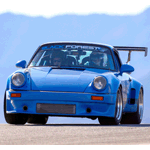
marcus981 - Autocrosser
- Posts: 124
- Joined: Tue May 27, 2014 4:43 pm
40 posts
• Page 1 of 3 • 1, 2, 3
Who is online
Users browsing this forum: No registered users and 71 guests
